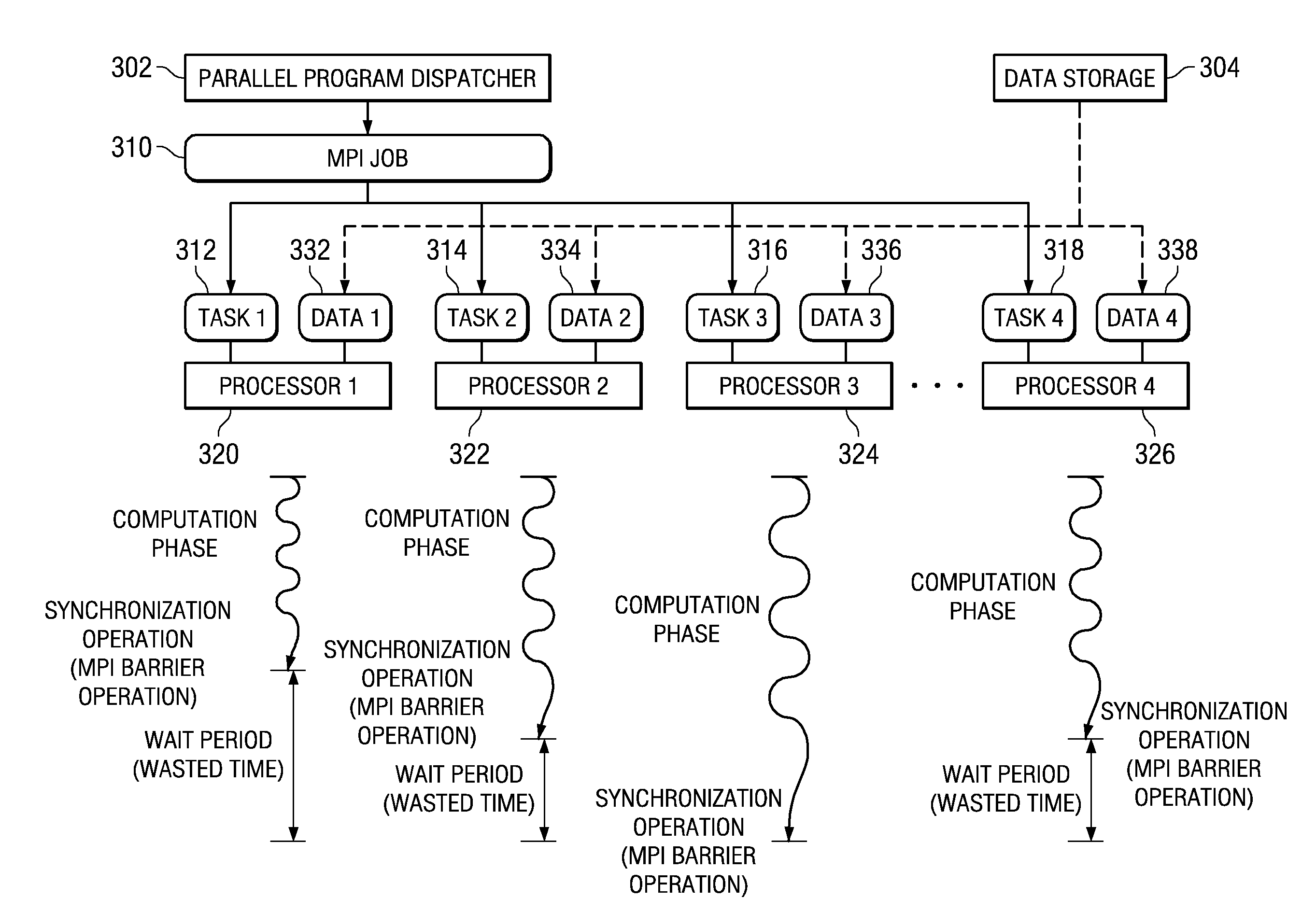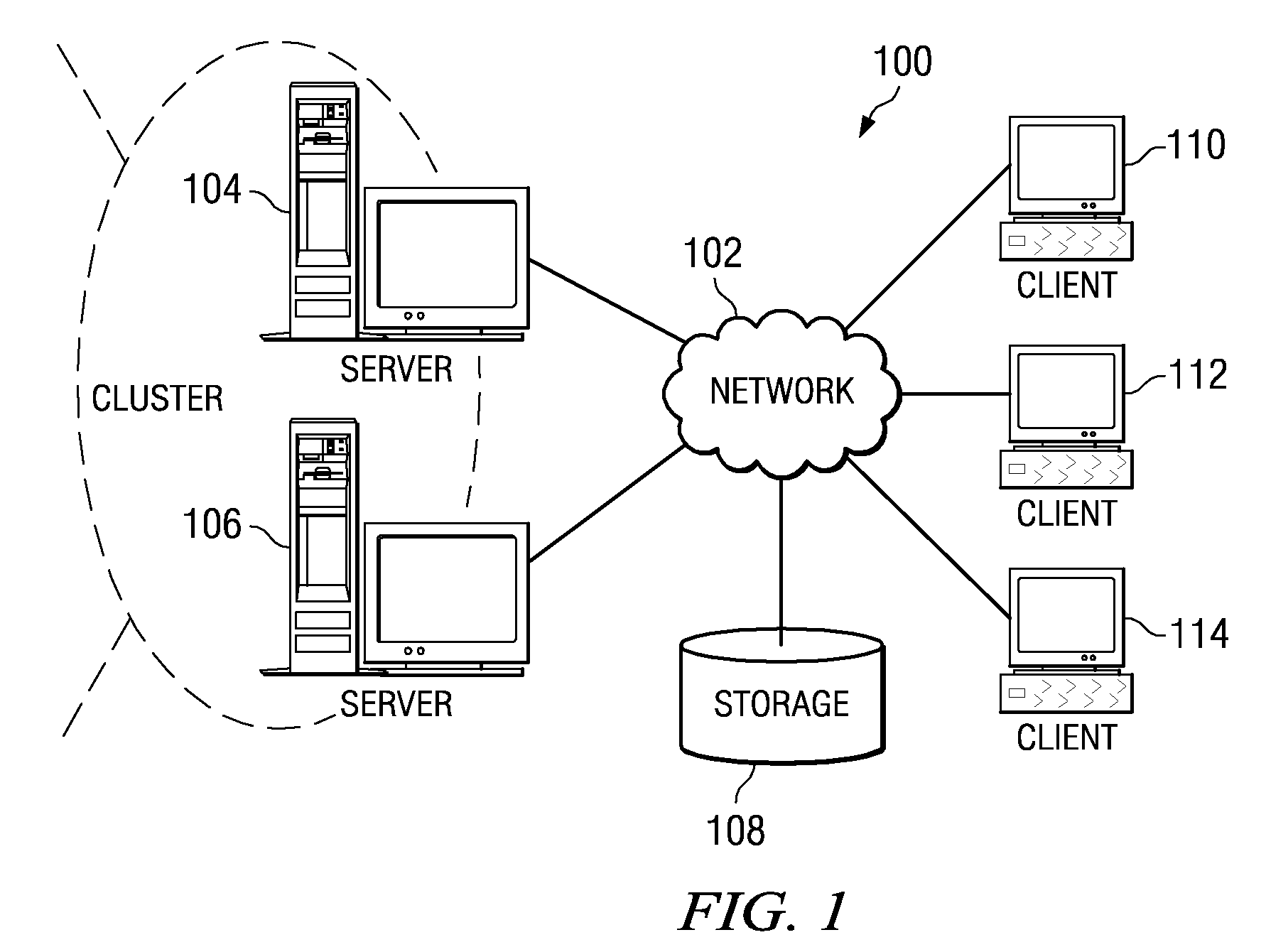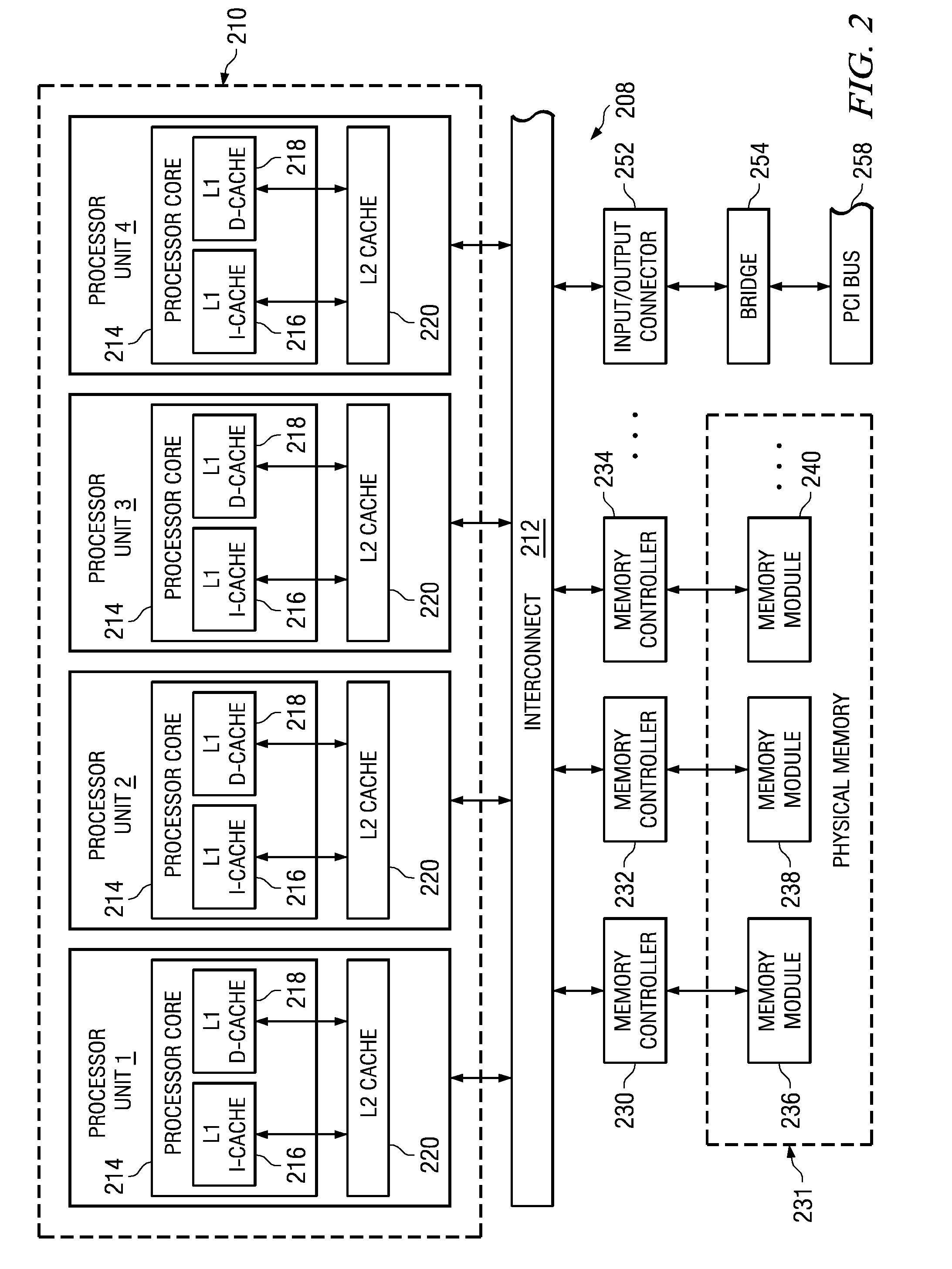System and Computer Program Product for Modifying an Operation of One or More Processors Executing Message Passing Interface Tasks
a technology of message passing interface and computer program product, which is applied in the field of data processing system and method, can solve the problems of inefficient use of processor resources, and waste of processor cycles, so as to reduce the number of wait periods and reduce the amount of wasted processor cycles
- Summary
- Abstract
- Description
- Claims
- Application Information
AI Technical Summary
Benefits of technology
Problems solved by technology
Method used
Image
Examples
Embodiment Construction
[0039]The illustrative embodiments provide a system, method, and computer program product for providing hardware based dynamic load balancing of message passing interface tasks. As such, the illustrative embodiments are especially well suited for use with a distributed data processing system in which a plurality of processors are used for the distribution of parallel program message passing interface tasks for parallel processing. Thus, FIGS. 1-2 are provided hereafter as examples of data processing systems and devices in which the illustrative embodiments of the present invention may be implemented. It should be appreciated that FIGS. 1-2 are only exemplary and are not intended to assert or imply any limitation with regard to the environments in which aspects or embodiments of the present invention may be implemented. Many modifications to the depicted environments may be made without departing from the spirit and scope of the present invention.
[0040]With reference now to the figur...
PUM
 Login to View More
Login to View More Abstract
Description
Claims
Application Information
 Login to View More
Login to View More - R&D
- Intellectual Property
- Life Sciences
- Materials
- Tech Scout
- Unparalleled Data Quality
- Higher Quality Content
- 60% Fewer Hallucinations
Browse by: Latest US Patents, China's latest patents, Technical Efficacy Thesaurus, Application Domain, Technology Topic, Popular Technical Reports.
© 2025 PatSnap. All rights reserved.Legal|Privacy policy|Modern Slavery Act Transparency Statement|Sitemap|About US| Contact US: help@patsnap.com



